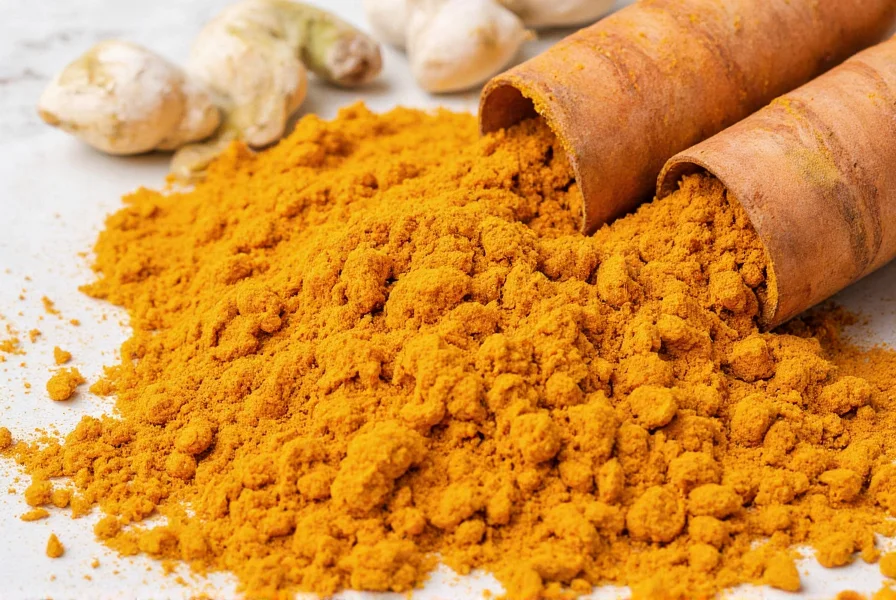Understanding the distinction between turmeric and curcumin is essential for anyone interested in culinary applications or potential health benefits. This confusion often stems from marketing language that uses these terms interchangeably, creating misunderstanding about what you're actually consuming.
What Exactly Is Turmeric?
Turmeric (Curcuma longa) is a flowering plant in the ginger family, native to tropical regions of South Asia. The part used commercially is the rhizome (underground stem), which is boiled, dried, and ground into the familiar yellow-orange powder used in cooking and traditional medicine for thousands of years.
As a culinary spice, turmeric provides:
- Distinctive earthy, slightly bitter flavor
- Vibrant yellow color to dishes
- Multiple bioactive compounds beyond just curcumin
- Traditional use in Ayurvedic and Chinese medicine systems
What Is Curcumin?
Curcumin is a specific polyphenol compound and the most studied curcuminoid found in turmeric. It's responsible for turmeric's bright yellow color and represents only a small percentage (approximately 2-8%) of the total composition of turmeric root.
Scientific research has focused on curcumin because of its potential biological activities, including:
- Anti-inflammatory properties
- Antioxidant capabilities
- Potential neuroprotective effects
- Various other studied health benefits
| Characteristic | Turmeric | Curcumin |
|---|---|---|
| Nature | Whole plant/spice | Single chemical compound |
| Composition | Contains 3-5% curcuminoids (including curcumin) | One specific curcuminoid (diferuloylmethane) |
| Other Components | Fiber, proteins, minerals, volatile oils, other curcuminoids | Pure compound (when isolated) |
| Typical Use | Culinary spice, traditional medicine | Supplement ingredient, research subject |
The Scientific Relationship Between Turmeric and Curcumin
Turmeric contains three main curcuminoids:
- Curcumin (diferuloylmethane) - about 77% of curcuminoids
- Demethoxycurcumin - about 17%
- Bisdemethoxycurcumin - about 3-6%
Together, these three compounds make up the "curcuminoids" that represent only 2-8% of turmeric's total composition. The remaining 92-98% consists of other compounds including:
- Volatile oils (like turmerone)
- Sugars
- Proteins
- Fiber
- Minerals
Research suggests that some of turmeric's benefits may come from the entire phytochemical profile working together, not just isolated curcumin - a concept known as the "entourage effect" in botanical science.
Why This Distinction Matters for Consumers
The difference between turmeric and curcumin becomes particularly important when considering health applications:
For culinary use: When you add turmeric to food, you're consuming the whole spice with all its natural compounds. The curcumin content in culinary turmeric is relatively low, so don't expect significant therapeutic effects from normal cooking amounts.
For supplementation: Many supplements specify whether they contain standardized curcumin (often 95% curcuminoids) or whole turmeric extract. Curcumin supplements typically provide much higher concentrations of curcumin than you'd get from dietary turmeric.
Bioavailability considerations: Pure curcumin has poor bioavailability on its own. Many supplements add black pepper extract (piperine) or use specialized formulations to enhance absorption - something that doesn't apply to regular turmeric spice.
Common Misconceptions About Turmeric and Curcumin
Several marketing practices contribute to ongoing confusion:
- Misleading labeling: Products may say "curcumin" on the front but contain whole turmeric extract
- Dosage confusion: Studies showing benefits often use 500-2,000mg of curcumin, not turmeric powder (which would require consuming 10-50 times more)
- Terminology mixing: Articles and websites often use "turmeric" when they specifically mean "curcumin" in research contexts
When evaluating products or research, always check whether they're referring to whole turmeric or isolated curcumin, as the implications for dosage and expected effects differ significantly.
Practical Guidance for Informed Choices
Whether you're using turmeric in cooking or considering supplements, here's how to make informed decisions:
- For cooking: Standard turmeric powder provides flavor, color, and modest health benefits as part of a balanced diet
- For potential health benefits: Look for supplements specifying "curcumin" content and standardized extracts (typically 95% curcuminoids)
- Check for bioavailability enhancers: Products with piperine, phospholipids, or nanoparticle formulations may offer better absorption
- Read labels carefully: Note whether you're getting whole turmeric or concentrated curcumin
Remember that most research on significant health benefits uses concentrated curcumin, not regular turmeric spice. While culinary turmeric is safe and beneficial as part of a healthy diet, don't expect the same effects as clinical curcumin supplements.
Conclusion
Turmeric and curcumin are related but distinctly different. Turmeric is the whole plant and spice, while curcumin is a single compound within turmeric that has been the focus of much scientific research. Understanding this difference helps consumers make informed choices about culinary use versus supplementation, and prevents confusion when interpreting health claims or research findings. When evaluating products or studies, always check whether they're referring to whole turmeric or isolated curcumin, as this distinction significantly impacts potential benefits and appropriate usage.











 浙公网安备
33010002000092号
浙公网安备
33010002000092号 浙B2-20120091-4
浙B2-20120091-4